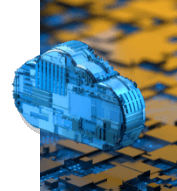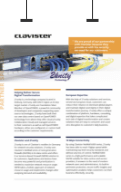Next Generation Firewalls – an overview

The list of potential cyber threats facing businesses is growing in size and severity almost daily, so securing your network is now truly non-negotiable. The easiest and most effective way to ensure protection is by installing a next-generation firewall (NGFW) solution.
This blog will take you through all you need to know about next-generation firewall solutions, including how they differ from traditional firewalls and their features and advantages.
What are next-generation firewalls?
Next-generation firewalls (also known as second generation firewalls) are firewalls which are enhanced with intrusion prevention and application intelligence. They are the only type of firewall that provide adequate protection against new and emerging cybersecurity threats, providing enhanced protection through advanced features.
What is the difference between traditional and next generation firewalls?
Traditional (first generation) firewalls assessed packets, network addresses, and ports to determine whether or not data should be allowed through. However, as application traffic increased enormously, traditional firewalls were unable to keep up. With this great increase in application traffic, criminals were able to conceal malware where traditional firewalls couldn’t see it. This meant traditional firewalls were unable to carry out the job they were designed for, leading to the creation of next-generation firewalls. This shift has been happening for the last 30 years and now NGFWs have become an essential part of cyber security stack. If you haven’t replaced your old firewalls, now is the time to give it a serious consideration.
What features do next generation firewalls have?
As the networking environment becomes more complicated than ever for businesses, there are certain capabilities and features users will want to ensure their NGFW solution has. NGFWs were explicitly designed with a greater set of capabilities than previous generations, including application control, intrusion preventions systems, anti-malware solutions, and deep pack inspection, among many others.
Web Application control
Web applications are practically a necessity for everyday life, and therefore it is imperative that those being used are secure. With application control built into some NGFWs, this allows users to create policies which allow, deny or restrict access to applications, thus giving users greater control and increased security. This is particularly important given the rise in remote and hybrid working following the pandemic. With a greater number of employees working from home, businesses need to ensure their firewall protects larger network areas which are no longer contained to offices.
IPS
Intrusion prevention systems (IPS) are also integral to the advanced protection offered by NGFWs. IPS helps to identify malicious traffic whilst blocking it from entering an organisations network. If an IPS detects an issue, it can take appropriate action as defined in the security polity. Appropriate actions when a threat is detected can include blocking access or preventing access to external websites that may lead to a data breach.
There are four main types of IPS:
- Network-based intrusion prevention system (NIPS) – A NIPS is usually placed at key network locations where it monitors cyberthreat.
- Wireless intrusion prevention system (WIPS) – WIPS monitor Wi-Fi networks and removes unauthorised devices.
- Host-based intrusion prevention system (HIPS) – HIPS is installed on endpoints such as PCs and monitors inbound and outbound traffic from the device.
- Network behaviour analysis (NBA) – NBA focuses on network traffic and detected odd movement that could lead to distributed denial of service (DDoS) attacks.
DPI
Another crucial element to NGFWs is deep packet inspection (DPI) or packet sniffing. DPI is a way of examining the contents of data packets as they pass through a network’s checkpoint using specific rules that have been programmed by the user. Unlike normal stateful packet inspection, DPI examines a much wider range of metadata and data connected with each packet the device interfaces with. Therefore, DPI is able to find hidden threats and can block malware, stop data leaks and can even be used to block unauthorised access to specific applications.
What are the advantages of next generation firewalls?
- Enhanced protection
The most obvious advantage of NGFWs is the enhanced protection they provide against security threats. Their creation was motivated by a need for better security measures to outsmart cybercriminals and therefore, much research and development has gone into (and is still ongoing) their features.
- Efficiency
Another advantage of NGFWs is that they are often much more cost-efficient in the long run than traditional firewall. Whilst upgrading to a NGFW can be expensive initially, NGFW can actually replace multiple security products with just a single platform. The multi-functionality that NGFWs provide make them not only cost-effective, but also resource effective.
- Transparency and improved management
Additionally, NGFWs can link IP addresses to specific user identities, thus enabling visibility and transparency leading to more control of a network.
Given the increasing (and worrying) rise of cyber-attacks, NGFWs are particularly beneficial as they contain antivirus and malware protection that is continuously and automatically upgraded after new threats are discovered. Therefore, users can be assured that virus and malware threats are much better managed by NGFWs than traditional firewalls. NGFWs are the future of protection from cyber threats. Clavister’s NetWall – our cutting-edge NGFW platform – offers advanced security to protect your business from hackers, viruses, ransomware, malware, data theft and myriad other security concerns such as the rise of remote work and Cloud technologies. Learn more about NetWall here: https://www.clavister.com/products/ngfw/.








